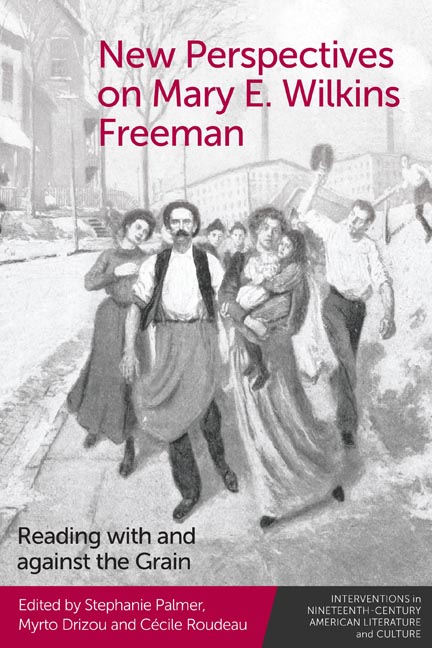Book contents
- Frontmatter
- Contents
- List of Figures
- Acknowledgments
- Contributors
- Reading Freeman Again, Anew
- Part I Kinship Outside of Normative Structures
- Part II Violent, Criminal, and Infanticidal: Freeman’s Odd Women
- Part III Women’s Work: Capital, Business, Labor
- Part IV Periodization Reconsidered
- Afterword: Why Mary E. Wilkins Freeman? Why Now? Where Next?
- Index
Afterword: Why Mary E. Wilkins Freeman? Why Now? Where Next?
Published online by Cambridge University Press: 20 October 2023
- Frontmatter
- Contents
- List of Figures
- Acknowledgments
- Contributors
- Reading Freeman Again, Anew
- Part I Kinship Outside of Normative Structures
- Part II Violent, Criminal, and Infanticidal: Freeman’s Odd Women
- Part III Women’s Work: Capital, Business, Labor
- Part IV Periodization Reconsidered
- Afterword: Why Mary E. Wilkins Freeman? Why Now? Where Next?
- Index
Summary
Why Mary E. Wilkins Freeman?
The essays in this timely volume extend our view of Mary E. Wilkins Freeman well beyond the heyday of post-bellum regionalism, with which she has typically been associated. They showcase her as a writer who, over her fifty-year career, employed many forms of the short story and penned fourteen novels, almost all of them in conversation with major changes in the nation, often, but not always, as they played out in New England. At her best—and she was often at her best— she explored questions that were pressing when she wrote. Many continue to resonate. Some—but only some—of her subjects are gender, gender formation, and sexuality, the lives of the elderly, family dynamics and individuals’ psychology, class, the conflicting interests of wage laborers and capitalists and the very nature of labor, all as they were informed by era, tradition, culture and place and affected by her characters’ individuality. She wrote in an astonishing range of genres in addition to novels and short stories—a narrative of community, plays, poetry, essays. Her letters, collected by Brent L. Kendrick, offer insight into the life of a professional woman writer between 1875 and 1930.
Freeman’s fiction is rarely as straightforward as it may seem. Much of it is staunchly undecidable, to adapt Elizabeth Meese’s influential phrase.1 Indeed, undecidability is a hallmark of an artistry that is indispensable to the pleasure of reading her and to the excitement that this new volume of scholarship offers. Because Freeman’s artistry is often assumed rather than examined, I begin with an exploration of it, and hope that more extensive discussion will follow.
Assessing Freeman’s artistry can be a challenge because it often confounds persisting assumptions about artistry itself. Freeman supported herself by her writing and wrote for the money she earned through it. As Brent L. Kendrick’s chapter shows, she was adept at negotiating payment for her work. She tailored her writing for placement in specific magazines—Harper’s Bazar, Harper’s Monthly Magazine, The Ladies’ Home Journal, Woman’s Home Companion, to name a few—and for specific publishers, especially Harpers.
- Type
- Chapter
- Information
- New Perspectives on Mary E. Wilkins FreemanReading with and against the Grain, pp. 272 - 285Publisher: Edinburgh University PressPrint publication year: 2023



